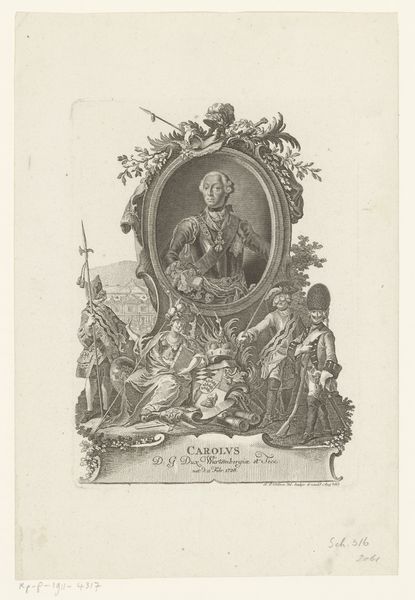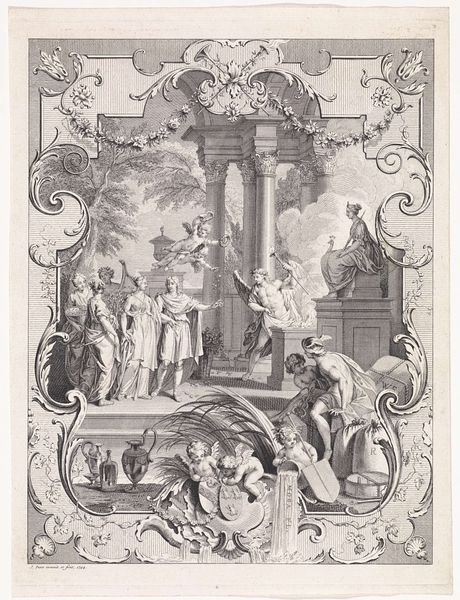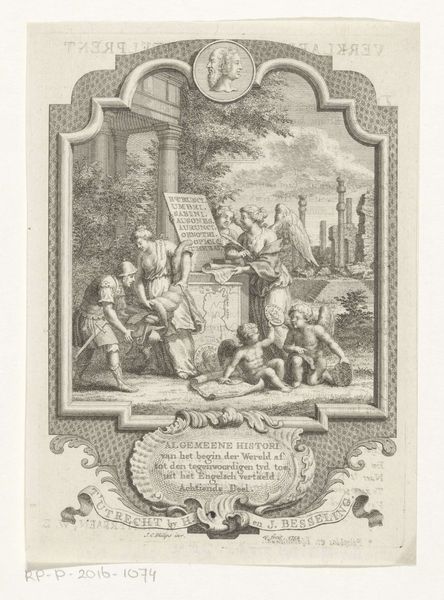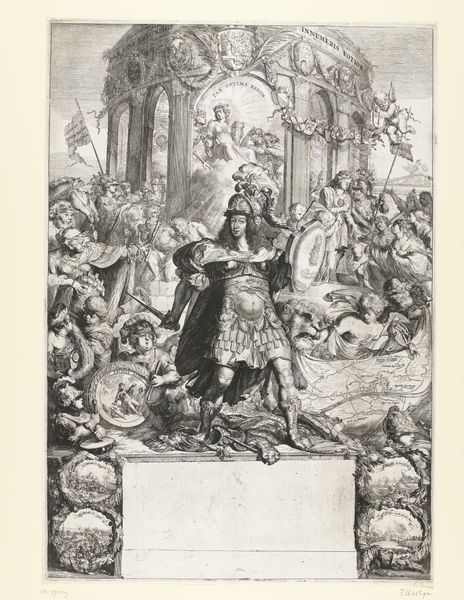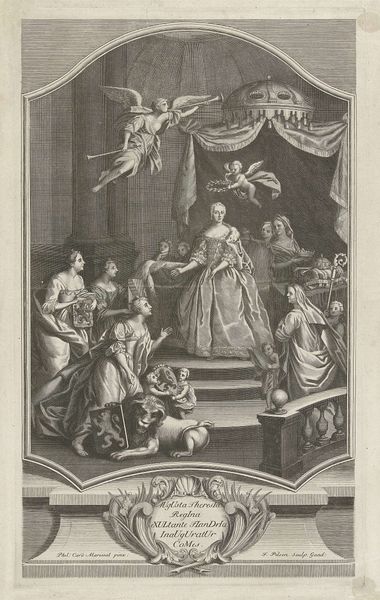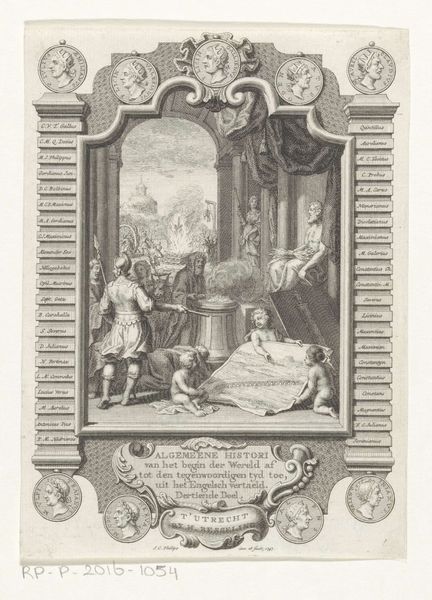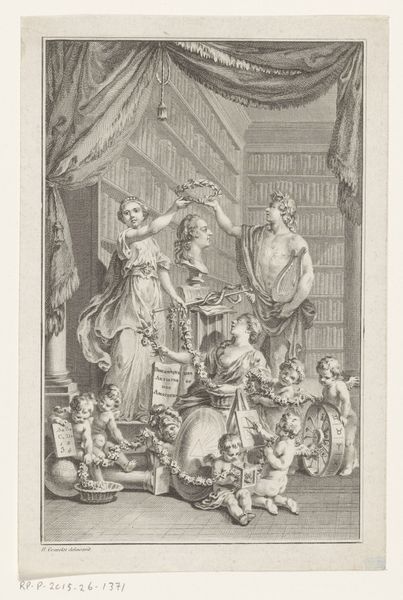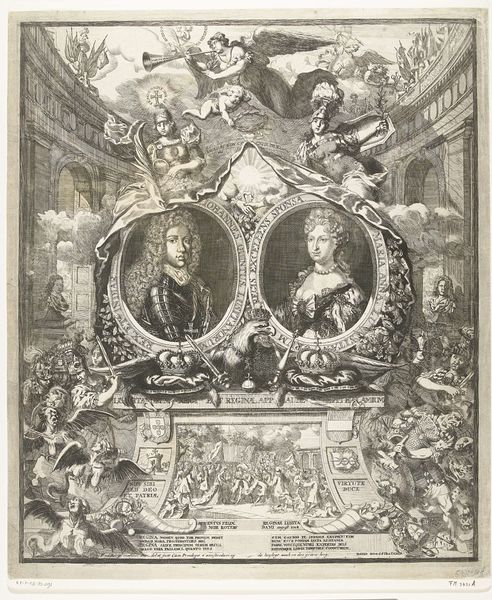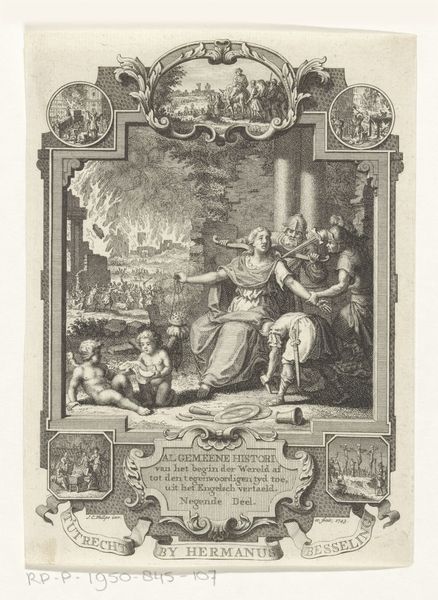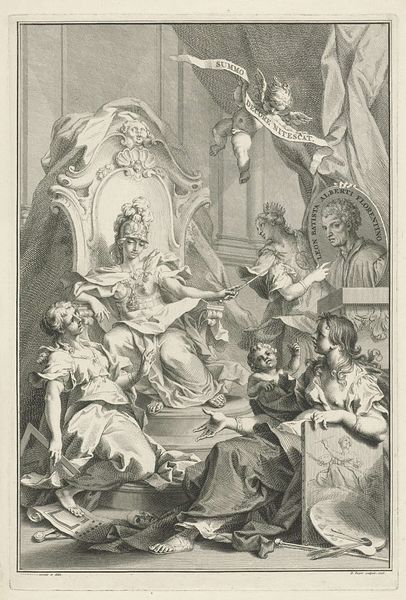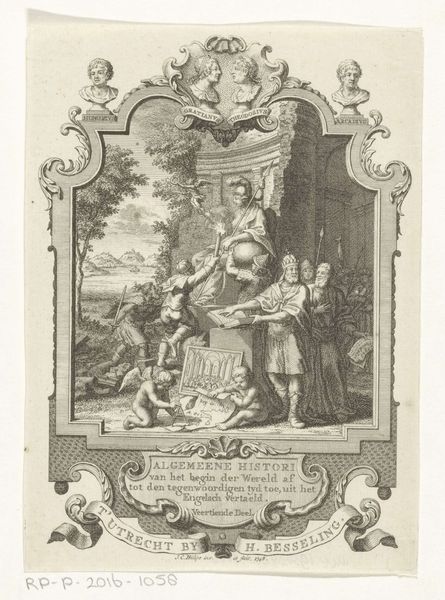
Ferdinand VI als opvolger van Filips V ten midden van zijn familie 1739
0:00
0:00
pietertanje
Rijksmuseum
print, engraving
#
portrait
#
baroque
# print
#
old engraving style
#
group-portraits
#
history-painting
#
engraving
Dimensions: height 332 mm, width 203 mm
Copyright: Rijks Museum: Open Domain
Editor: Here we have Pieter Tanjé's engraving, "Ferdinand VI as successor to Philip V in the midst of his family," from 1739, currently residing in the Rijksmuseum. It's incredibly detailed and feels very staged, almost performative. What social commentary do you think Tanjé is trying to express with this piece? Curator: This piece, beyond its baroque style, presents a specific historical narrative. Tanjé is embedding the ascendancy of Ferdinand VI within a very particular context: divine right, familial legacy, and dynastic ambition. But, let's consider *who* benefits from such representation. What socio-political messages are being subtly communicated through the artistic language of dynastic succession? Editor: It feels like a very deliberate attempt to legitimise Ferdinand’s reign. All the cherubs and family portraits seem designed to reinforce his right to rule. Curator: Precisely. How does this formal portrait contribute to the construction of royal authority, not just visually, but as a cultural artifact actively participating in power dynamics? Look at how gender functions within the engraving, how are women staged and positioned? Editor: I see it now – the women are largely depicted as mothers and nurturers. Their primary role seems to be ensuring the continuation of the family line, reinforcing traditional gender roles. Curator: Indeed, that reinforcement of traditional roles has lasting impacts. In considering this work, think about whose stories *aren't* told and how the promotion of power can obscure broader socio-economic issues or suppress marginalised voices. Does knowing the context behind empower a deeper understanding? Editor: Absolutely! It moves it beyond just an image of a royal family into a commentary on power, gender and social norms of the time. It makes me wonder about counter-narratives. Curator: Right, it is crucial to explore those hidden narratives, too. Thinking about the engraving in that way enriches our viewing.
Comments
No comments
Be the first to comment and join the conversation on the ultimate creative platform.

